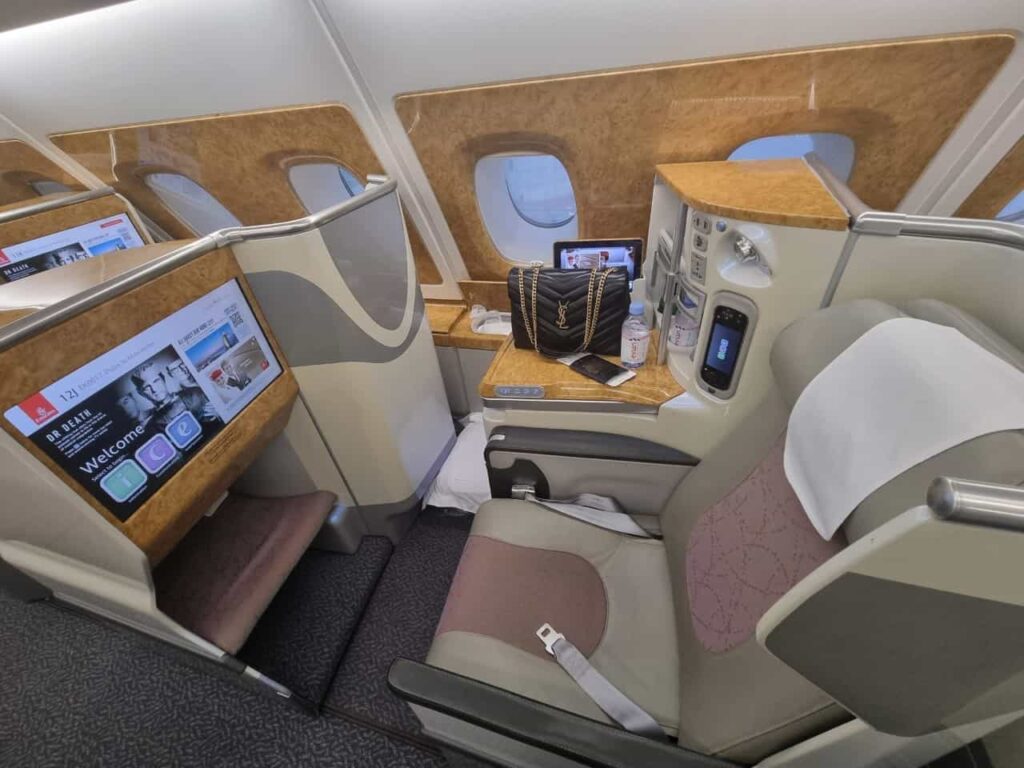The global airline industry consists of a vast number of carriers, each offering unique services and experiences for their passengers. In the United States alone, there are numerous large, regional, and low-cost airlines catering to the diverse needs of travelers across the country.
From coast to coast, these airlines ensure that people can stay connected, explore new destinations, and transport essential goods.
As you delve into the world of airlines, it’s important to consider factors such as fleet size, aircraft types, passenger traffic, and market share. Additionally, understanding the role of airline alliances and mergers can help you make informed decisions when choosing carriers for your travel plans or business needs.
Key Takeaways
- A vast number of global airlines cater to diverse passenger needs, with major carriers dominating the U.S. market.
- Factors such as fleet size, passenger traffic, and market share play a crucial role in understanding airline dynamics.
- Airline alliances and mergers shape the industry, impacting traveler options and overall operations.
Global Airlines Overview
As you explore the world of aviation, it’s important to understand the composition of global airlines. Today, the global airline industry is made up of more than 2000 airlines, connecting people and cargo across the globe. These airlines operate over 23,000 aircraft and provide service to over 3,700 airports.
Each region of the world has its own prominent airlines, often distinguished by their market share and operational size.
In the United States, you would find major carriers like American Airlines, Delta Air Lines, and United Airlines, while Europe is home to some of the largest airlines like Lufthansa, British Airways, and Air France. In Asia, airlines such as China Southern Airlines, Japan Airlines, and Singapore Airlines dominate the market.
Notably, some key players in the industry have emerged as the largest airlines by various metrics, including revenue, passenger traffic, and fleet size. Emirates, for instance, is known for its expansive fleet of Airbus A380s, while Delta Air Lines often leads the way in terms of passenger numbers.
In terms of growth and expansion, the airline landscape continues to evolve. Recently, we see the emergence of British startup Global Airlines intending to start its operations in Spring 2024 with transatlantic routes between London, New York City, and Los Angeles.
It is important for you to keep track of changes within the industry, as well as regional trends and fluctuating market values. By staying informed about various airlines and their corresponding regions, you can better understand the complex dynamics of this ever-changing industry.
Top Airlines in the United States
When considering airlines in the United States, several major carriers stand out. Delta Air Lines has been named the most reliable airline, providing you with confidence in their services.
Another top contender is Southwest Airlines. Known for its affordability and customer satisfaction, Southwest has been a popular choice among travelers.
Alaska Airlines sets itself apart with a focus on customer service and overall satisfaction. In the past, Alaska has ranked at the top among American carriers.
United Airlines, one of the largest U.S. airlines, is known for its expansive domestic and international route network. Extensive coverage makes them a convenient option for your travel needs.
Lastly, American Airlines, another major carrier, boasts an extensive fleet and numerous destination options. As a significant national airline, American offers you various choices for both domestic and international travel.
Keep these major carriers in mind when booking your next flight within or from the United States. By choosing a top airline, you can ensure a more comfortable and reliable travel experience.
Fleet Size and Aircraft
You might be curious about the number of airlines and their fleet sizes. It’s important to understand the factors that contribute to their overall performance, such as revenue and types of aircraft. A well-maintained fleet can help airlines maintain a competitive edge in the industry.
One good way to compare airlines is by examining their fleet size. For instance, American Airlines maintains the largest fleet with 913 aircraft, while Nauru Airlines operates with a smaller fleet of just 5 aircraft. Different airlines operate with a diverse range of aircraft to meet various demands for capacity and range.
Besides fleet size, the types of aircraft operated also play a crucial role in an airline’s success. United Airlines, for example, utilizes Boeing 767 and 757 variants, with capacities ranging from 142 to 240 passengers. The choice of aircraft can have an impact on efficiency, fuel consumption, and passenger experience.
Assessing an airline’s revenue can offer insight into its overall performance.
A larger fleet might generate more revenue due to its ability to serve more routes and accommodate more passengers. However, managing costs, fuel efficiency, and aircraft maintenance are equally important for profitability.
In short, fleet size, types of aircraft, and revenue all contribute to an airline’s success. By understanding these factors, you can better appreciate the complexities of the aviation industry.
Passenger Traffic and Market Share
In recent years, passenger traffic has experienced significant growth. For example, in December 2021, U.S. airlines carried 68.1 million systemwide passengers. Despite this growth, passenger numbers were still down 13.4% compared to pre-pandemic levels in December 2019.
On a global scale, airline industry passenger traffic has shown a steady increase since 2004. However, fluctuations happen, mostly due to external factors such as economic downturns or global crises.
When it comes to the domestic market, the leading airlines hold significant shares. In the U.S., American Airlines has a domestic market share of 17.5%, narrowly edging out Delta Airlines at 17.3%. Meanwhile, smaller carriers occupy the remaining market shares.
North American market share is also an important consideration. To see which air carriers dominate this market, look at the total number of passengers flown. For instance, Southwest Airlines has a 20% share, flying 132,251,331 passengers, followed by Delta Air Lines at 16% with 106,062,211 passengers.
Passenger miles are another measure to consider. This metric can provide insight into how far people are traveling and the overall demand for air travel. By understanding the passenger miles flown and passenger numbers, you can better understand the air carriers’ performance and potential trends in the industry.
So, when analyzing the airline market, remember to consider passengers, domestic market, passenger miles, air carriers, passenger numbers, passenger miles flown, and domestic market share. This will ensure that you have a comprehensive and accurate understanding of the industry’s dynamics.
Low-Cost and Regional Carriers
When considering low-cost carriers, Spirit Airlines is known for its budget-friendly fares. You may also find JetBlue a solid option, offering superior comfort and service at affordable prices.
For regional travel, Hawaiian Airlines can connect you to multiple island destinations. Besides, Air Canada is a leading choice for travel within Canada itself.
If you’re looking for regional carriers in the United States, Horizon Air is a popular pick, with flights throughout the West Coast. These regional carriers often use focus cities as hubs for efficient travel.
When traveling within Canada, Air Canada provides an extensive network of routes, making it easy to reach your destination. Additionally, you might consider Canadian low-cost carriers for budget-conscious travel.
Cargo and Charter Airlines
Your interest in cargo and charter airlines is well-founded. These airlines play a crucial role in the transportation industry. In the United States, there are several cargo and charter airlines catering to different needs.
One notable cargo airline is Atlas Air. This airline transports freight across international and domestic destinations. Another major player in this sector is FedEx Express, known for handling time-sensitive shipments.
Kalitta Air specializes in transporting large cargo items. Meanwhile, Polar Air Cargo operates globally, ensuring your freight reaches its destination efficiently. UPS Airlines is another key cargo airline, offering reliable service in many markets.
You may also come across USA Jet Airlines in your research, which provides on-demand charter services for cargo transportation. Charter airlines, such as Allegiant Air, Eastern Airlines, and Frontier Airlines, mainly serve the passenger market but can accommodate cargo on occasion.
Additionally, regional carriers like Envoy Air and SkyWest Airlines, while operating under the American Eagle brand, offer scheduled passenger services and sometimes carry cargo when needed.
With this range of cargo and charter airlines available, you can trust that your shipment will be handled efficiently and safely. Choose the carrier that best suits your specific transportation requirements.
Airline Alliances and Mergers
Airline alliances play a significant role in the aviation industry as they facilitate cooperation and marketing among member airlines. They help expand the reach of international carriers and provide passengers access to more destinations airline alliance. There are three major airline alliances, which include Star Alliance, oneworld, and SkyTeam.
Star Alliance is the leading airline alliance, accounting for 21.7 percent of the market share. SkyTeam follows closely, with 16.1 percent, while oneworld claims 15.6 percent market share. These alliances include both legacy carriers and newer airlines, enhancing cooperation and global coverage for all members involved.
You may be interested in U.S. airlines and their history of mergers and acquisitions. Mergers between airlines help consolidate operations, routes, staff, and other resources. An unofficial compilation of completed U.S. airline mergers and acquisitions can be found here.
These mergers have resulted in many legacy carriers becoming a part of larger, more prominent airline groups. Your understanding of the aviation industry will benefit from knowing about airline alliances and the mergers that shape them, as they impact how you travel and the choices you make when booking flights.
Operations and Performance
Your operations and performance assessment of airlines should include key factors such as operating revenue, ICAO codes, cancellations, and various aspects of air travel.
When evaluating operating revenue, observe the financial performance of different airlines. The numbers often reflect market dynamics, cost structures, and operating strategies. You can compare this metric among carriers to understand their relative standings in the industry.
ICAO codes are essential identifiers for airlines, providing unique four-letter codes for each airline, making communication and tracking more efficient. Familiarize yourself with these codes as they play a significant role in air traffic management and flight planning.
Cancellations are an inevitable part of air travel. When reviewing airlines’ performance, consider their cancellation rates, which can vary widely between carriers. Consistent, low cancellation rates are indicative of efficient flight scheduling and robust operational management.
In terms of air travel, assess passenger experience, route networks, fleet compositions, and various services provided by airlines. Understanding how airlines accommodate different customer preferences and how they maintain service quality will give you a clearer picture of their performance.
Remember to stay confident, knowledgeable, neutral, and clear in your approach while assessing airlines’ operations and performance. By considering the aspects mentioned above, you can form a well-rounded understanding of the air travel industry and the players within it.
Main Airports and Focus Cities
When considering main airports and focus cities, you’ll find some of the busiest hubs in various continents. In North America, Hartsfield-Jackson Atlanta International Airport is a major hub for Delta Air Lines, while Seattle-Tacoma International Airport serves as a significant hub for both Alaska Airlines and Delta.
Switching our focus to Newark, Newark Liberty International Airport is a prime hub for United Airlines. By visiting these airports, you’ll experience the central operations for some of the largest airlines in the United States.
Each airport serves an essential role in their respective airlines’ networks. Atlanta, for example, connects passengers throughout the nation and serves international destinations as well. Meanwhile, Seattle serves as a vital gateway to the Asia-Pacific market.
While these airports are major hubs, keep in mind that there are numerous focus cities within each continent, offering additional connectivity. In the end, understanding the main airports and focus cities will assist you in planning your travel more efficiently and easily.
Routes and Markets
When considering the number of airlines, it’s crucial to examine the various routes and markets they serve. In the United States, more than 369 million passengers were transported in 2020, making it the second-largest air travel market globally.
Asia is another significant market for airlines. The region features numerous airline hubs, catering to both domestic and international flights. Growth in the Asian aviation market continues to impact route development and airline competition.
In Europe, a mix of legacy airlines and low-cost carriers operate across diverse routes. These airlines serve a large network of destinations, with connections between major cities and smaller regional airports. They often maintain dense route networks due to the region’s high population density and interconnected nature.
The Middle East is known for its high-profile airlines, such as Emirates and Qatar Airways. These carriers have emerged as major players in the global market, focusing on connecting global hubs through their home bases in the region. In doing so, they’ve established a significant presence in the worldwide airline landscape.
By understanding the variety of routes and markets airlines serve, you can appreciate the complexity of the industry and its influence across different regions of the world.
Trends and Traveller Demographics
During the fall season, you may notice a decline in demand for air travel. Leisure travelers often choose summer months to plan their vacations, while business trips increase in the fall. Orlando and California are popular destinations for leisure travelers, seeing an influx of passengers during the summer months.
You’ll find that cities like Minneapolis, Detroit, Salt Lake City, Boston, and New York also experience fluctuations in traveler demographics. These cities become more appealing to business travelers during the fall, which may alter the demand for flights.
Revenues for airlines tend to rise during the summer months, thanks to the increase in leisure travel. Airlines often capitalize on this demand by offering special promotions and packages to attract more customers.
Remember, air travel trends and demographics can vary depending on various factors. Always consider these factors when planning your travel, and be prepared to adapt to changes in the market. Happy flying!
Regional Airlines and Subsidiaries
Air Wisconsin, operating as a partner of United Express, primarily provides regional service in the Midwest. Meanwhile, Cape Air connects various small cities throughout the Northeast, Midwest, and the Caribbean.
You may have also heard of CommutAir, another United Express partner, which operates numerous regional flights throughout the eastern United States. Elite Airways stands out as an independent carrier, mainly flying along the East Coast and providing charter services.
When it comes to Endeavor Air, it is a wholly-owned subsidiary of Delta Air Lines and the world’s largest operator of MHI RJ CRJ-900 aircraft. Additionally, Horizon Air, owned by Alaska Air Group, connects cities throughout the West Coast.
A key player in regional services is Mesa Airlines, which partners with both United Express and American Eagle. Piedmont Airlines, operating as American Eagle, primarily serves the Eastern United States, while PSA Airlines also flies under the American Eagle brand in various regions.
Republic Airways works with major airlines like United Express, American Eagle, and Delta Connection, providing essential regional connectivity. Silver Airways focuses on providing flights in Florida, the Bahamas, and other Southeastern destinations.
Lastly, major airlines have subsidiaries like Delta Connection, United Express, and American Airlines Group. These subsidiaries offer diverse regional flight services across the United States and maintain connections with many smaller airlines mentioned above. Overall, regional airlines and subsidiaries play a vital role in the aviation industry, connecting passengers to diverse destinations.


Largest Airlines in North America and Worldwide
As you explore the aviation industry, you will find that the largest passenger airline in North America is American Airlines. They have a substantial presence in the market and are closely followed by Southwest and Delta Airlines.
Regarding the worldwide context, American Airlines remains a significant player, owning the largest fleet and the most capacity to carry passengers. However, United Airlines takes the title for having the largest fleet size in terms of ownership.
In North America, there’s a vast array of budget airlines that dominate a large portion of the flight operations. Some of the most prominent names include Allegiant Air, Frontier Airlines, JetBlue, Southwest Airlines, and Spirit Airlines among others.
Houston-Intercontinental, one of the major airport hubs in the region, serves as a vital connection point for airlines such as United, which operates numerous flights to and from this location.
By understanding the major players in the aviation industry – both in North America and globally – you will gain valuable insights into the entities shaping the world of air travel. Keep in mind the names and figures discussed here as you further explore the fascinating domain of airlines and aviation.
Frequently Asked Questions
How many airlines operate worldwide?
According to data from 2018, there were approximately 5,000 airlines with an International Civil Aviation Organization (ICAO) code. This number includes both commercial and cargo carriers.
Which are the major US airlines?
The major US airlines, often referred to as the “big four,” include American Airlines, Delta Air Lines, United Airlines, and Southwest Airlines. These airlines serve a large number of destinations and maintain extensive route networks.
What are the largest airlines by fleet size?
The largest airlines by fleet size include American Airlines, Delta Air Lines, and United Airlines. Their fleet sizes consist of hundreds of aircraft, providing service to numerous destinations worldwide.
How many airlines are based in the US?
There are over a hundred airlines based in the US, ranging from major carriers like American, Delta, and United to smaller regional airlines and low-cost carriers such as Spirit Airlines and Frontier Airlines. These airlines provide domestic and international services.
What factors contribute to the total number of airlines?
Various factors impact the total number of airlines, such as market demand for air travel, economic conditions, regulatory environments, and competition. These factors can influence the entry of new carriers and the longevity of existing ones.
Which airline offers the lowest fares?
Low-cost carriers like Spirit Airlines are known for offering lower fares compared to traditional airlines. However, it’s essential to consider additional fees for services like baggage and seat selection, as these can impact the total cost of your trip.



